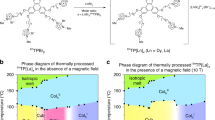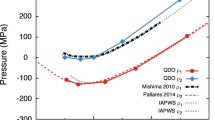Abstract
Liquid water is thought by many to be composed of a quasi-stable mixture of clusters that range in size from dimers to several hundred molecules and even to micrometer-size units [1–3]. The implications of such a three-dimensional structure, or whether it even exists, are often subject to debate. While many treatments (temperature change, shaking, electro-magnetic radiation, etc.) alter the physical-chemical properties of water, just how these interventions may affect the assemblage of clusters is often a matter of conjecture. The object of this study is to relate the effect of a weak, spinning, magnetic field to the assemblage of water clusters, and the subsequent changes in the chemical reactivity of bulk water. The results show that such a weak, rotating, magnetic field applied to water can either increase or decrease the spontaneous net rate of hydration of CO2, depending on the direction of spin of the magnet and the history of a given water sample. The targets for a magnetic field applied in this way are chiral water clusters and their destruction, or the inter/intra-conversion of enantiomers, can change the reactivity of water. The conclusion is that samples of distilled water, under otherwise identical conditions, can have a range of chemical reactivities depending on their individual assemblage of clusters.



Similar content being viewed by others
REFERENCES
Chaplin, M.F., What is liquid water, Sci. Soc., 2013, vol. 58, pp. 41–45.
Goncharuk, V., Water Clusters, in Drinking Water, Cham: Springer, 2014, pp. 51–103. https://doi.org/10.1007/978-3-319-04334-0_3
Goncharuk, V.V., Syroeshkin, A.V., Pleteneva, T.V., Uspenskay, E.V., Levitskaya, O.V., and Tverdislov V.A., On the possibility of chiral structure-density submillimeter inhomogeneities existing in water, J. Water Chem. Tech., 2017, vol. 39, no. 6, pp. 319–324. https://doi.org/10.3103/S1063455X17060029
Roy, R., Tiller, W.A., Bell, I., Hoover, M.R., The structure of liquid water; Novel insights from materials research; Potential relevance to homeopathy, Mater. Res. Innovations, 2005, vol. 9, no. 4, pp. 98–103. https://doi.org/10.1080/14328917.2005.11784911
Xantheas, S., Cooperativity and hydrogen bonding network in water clusters, Chem. Phys., 2000, vol. 258, pp. 225–231.
Malloum, A., Fifen J.J., Dhaouadi, Z., Engoa, S.G.N., and Conradie, J., Structures, relative stability and binding energies of neutral water clusters, (H2O)2–30, New J. Chem., 2019, vol. 43, pp. 13020–13037. https://doi.org/10.1039/c9nj01659g
Khakhalin, A.V., and Gradoboeva, O.N., Investigation of the chiral properties of configurations of (H2O)n, K+(H2O)m, and Na+(H2O)m (n = 4–8, m = 5–10) small water clusters at 1 K, Moscow Univ. Phys. Bull., 2016, vol. 71, no. 4, pp. 413–419. https://doi.org/10.3103/S002713491604010X
Chaplin, M.F., The memory of water: An overview, Homeopathy, 2007, vol. 96, pp. 143–150. https://doi.org/10.1016/j.homp.2007.05.006
Clark, G.N.I., Cappa, C.D., Smith, J.D., Saykally R.J. and Head-Gordon T., The structure of ambient water, Mol. Phys., 2010, vol. 108, no. 11, pp. 1415–1433. https://doi.org/10.1080/00268971003762134
Pang, X-F., Deng, B., Tang, B., Influence of magnetic field on macroscopic properties of water, Mod. Phys. Lett. B, 2012, vol. 26, no. 11, p. 1250069. https://doi.org/10.1142/S0217984912500698
Sidorenko, G., Brilly, M., Laptev, B., Gorlenko, N., Antoshkin, L., Vidmar, A., Kryžanowski, A., The role of modification of the structure of water and water-containing systems in changing their biological, therapeutic, and other properties overview, Water, 2021, vol. 13, pp. 2441–2455. https://doi.org/10.3390/w13172441
Emamdadi, N., Gholizadeh, M., and Housaindokht, M.R., The effect of magnetized water on the oxidation reaction of phenol derivatives and aromatic amines by horseradish peroxidase enzyme, Biotechnol. Prog., 2020, vol. 36. no. 6, p. e3035. https://doi.org/10.1002/btpr.3035
Goncharuk, V.V., Orekhova, E.A., and Malyarenko, V.V., Influence of temperature on water clusters, J. Water Chem. Technol., 2008, vol. 30, no. 2, pp. 80–84. https://doi.org/10.3103/S1063455X08020033
Rao, M.L., Sedlmayr, S.R., Roy, R., and Kanzius, J., Polarized microwave and RF radiation effects on the structure and stability of liquid water, Curr. Sci., 2010, vol. 98, no. 11, pp. 1500–1504.
Shevchenko, I.V., Influence of light on chemical reactivity of water, 2017, arXiv:1706.02148.
Rad, I., Stahlberg, R., Kung, K., and Pollack, G.H., Low frequency weak electric fields can induce structural changes in water, PLoS One, 2021, vol. 16, no. 12, p. e0260967. https://doi.org/10.1371/journal.pone.0260967
James, T., Wales, D.J., and Rojas, J.H., Energy landscapes for water clusters in a uniform electric field, J. Chem. Phys., 2007, vol. 126, no. 5, p. 054506. https://doi.org/10.1063/1.2429659
Hwang, S.G., Hong, J.K., Sharma, A., Pollack, G.H., and Bahng, G.W., Exclusion zone and heterogeneous water structure at ambient temperature, PLoS One, 2018, vol. 13, no. 4, p. e0195057. https://doi.org/10.1371/journal.pone.0195057
Stemler, A., An assay for carbonic anhydrase activity and reactions that produce radiolabeled gases or small uncharged molecules, Anal. Biochem., 1993, vol. 210, pp. 328–331. https://doi.org/10.1006/abio.1993.1203
Gibbons, B.H. and Edsall, J.T., Rate of hydration of carbon dioxide and dehydration of carbonic acid at 25°, J. Biol. Chem. 1963, vol. 238, no. 10, pp. 3502–3507. https://doi.org/10.1016/S0021-9258(18)48696-6
Wang B., and Cao Z., How water molecules modulate the hydration of CO2 in water solution: Insight from the cluster-continuum model calculations, J. Comput. Chem., 2013, vol. 34, pp. 372–378. https://doi.org/10.1002/jcc.23144
Garg, L.C., and Maren, T.H., The rates of hydration of carbon dioxide and dehydration of carbonic acid at 37°C, Biochim. Biophys. Acta, 1972, vol. 261, pp. 70–76. https://doi.org/10.1016/0304-4165(72)90315-7
Wasak, A., Drozd, R., Jankowiak, D. and Rakoczy, R., Rotating magnetic field as tool for enhancing enzymes properties—Laccase case study, Sci. Rep., 2019, vol. 9, no. 1, p. 3707. https://doi.org/10.1038/s41598-019-39198-y
Sarraf, M., Kataria, S., Taimourya, H., Santos, L.O., Menegatti, R.D., Jain, M., Ihtisham, M., and Liu S., Magnetic field (MF) applications in plants: An overview, Plants, 2020, vol. 9, pp. 1139–1156. https://doi.org/10.3390/plants9091139
Galland, P., and Pazur, A., Magnetoreception in plants, J. Plant Res., 2005, vol. 118, pp. 371–389. https://doi.org/10.1007/s10265-005-0246-y
Zhang, X., Yarema, K. and Xu, A., Impact of static magnetic field (SMF) on microorganisms, plants, and animals, in Biological Effects of Static Magnetic Fields, Singapore: Springer, 2017, pp. 133–172. https://doi.org/10.1007/978-981-10-3579-1_5
Brown F.A. Jr., and Chow C.S., Non-equivalence for bean seeds of clockwise and counterclockwise magnetic motion: A novel terrestrial adaptation. Biol. Bull., 1975, vol. 148, pp. 370–379. https://doi.org/10.2307/1540514
ACKNOWLEDGMENTS
The author would like to thank William Lucas and Savithramma Dinesh-Kumar, Chairs of the Plant Biology Department, for their support and encouragement, and Paul Jursinic for detailed reading of the manuscript and useful commentary.
Funding
Research support was provided by the University of California-Davis, Department of Plant Biology. No extramural funding was received.
Author information
Authors and Affiliations
Corresponding author
Ethics declarations
The author declares that he has no conflicts of interest.
About this article
Cite this article
Stemler, A.J. Rotational Direction of a Weak Magnetic Field Selectively Targets Chiral Clusters in Liquid Water and Modifies Its Chemical Reactivity. J. Water Chem. Technol. 45, 544–551 (2023). https://doi.org/10.3103/S1063455X23060115
Received:
Revised:
Accepted:
Published:
Issue Date:
DOI: https://doi.org/10.3103/S1063455X23060115




